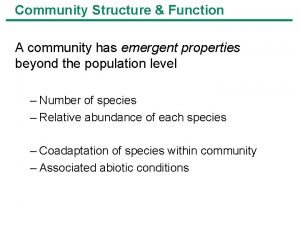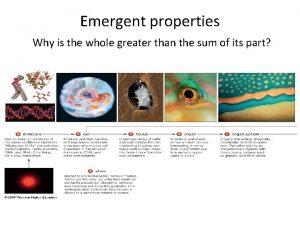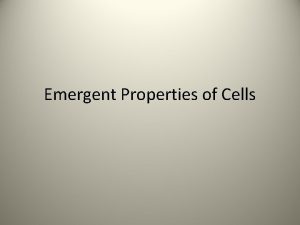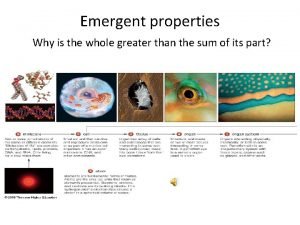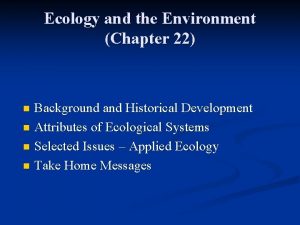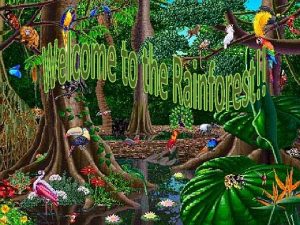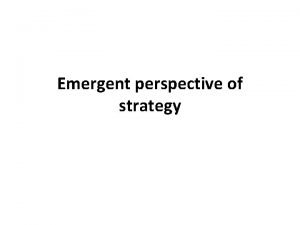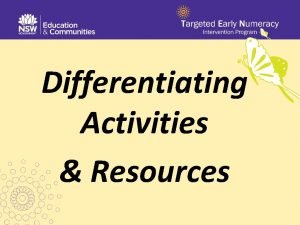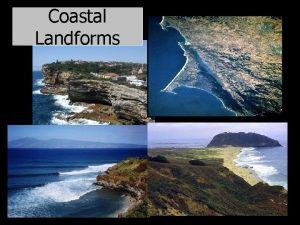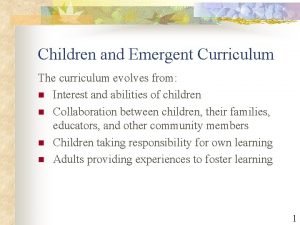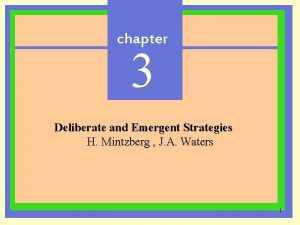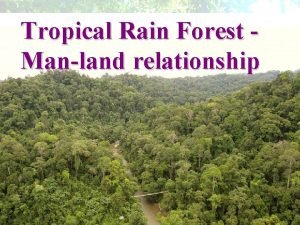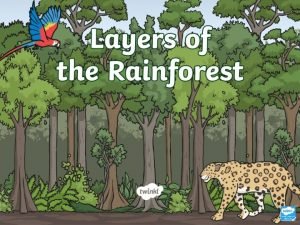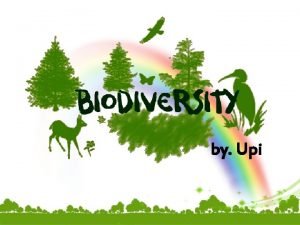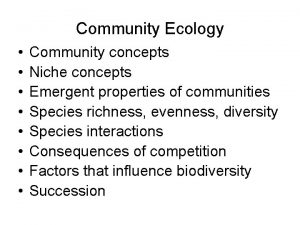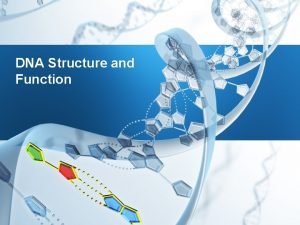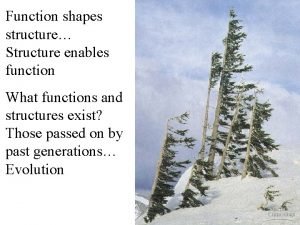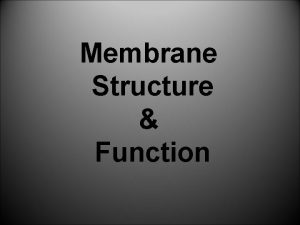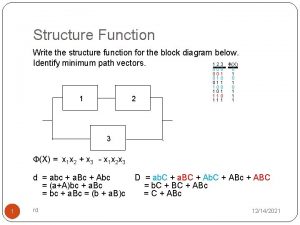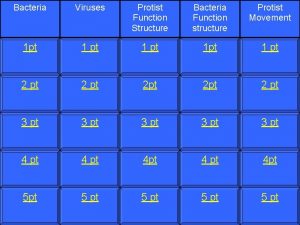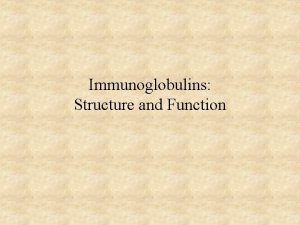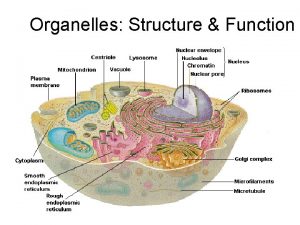Community Structure Function A community has emergent properties

























- Slides: 25

Community Structure & Function A community has emergent properties beyond the population level – Number of species – Relative abundance of each species – Coadaptation of species within community – Associated abiotic conditions

Community Structure and Diversity • Species richness (S) = the number of species in the community • Species even-ness (or relative abundance) = the proportion that individuals of each species contribute to total individuals of all species

Two measures of community diversity Simpson’s index D = 1/( (pi 2)) pi = relative abundance of each species = ni / N D = 1 if only 1 species is present (no diversity) Dmax = S if all species have equal numbers (perfect even-ness)

Two measures of community diversity Shannon (or Shannon-Weiner) index H = - (pi)(lnpi) pi = relative abundance of each species = ni / N H = 0 if only 1 species is present (no diversity) Hmax = ln(S) if all species have equal numbers (perfect even-ness)

Species Rank - Abundance Curves incorporate both richness and even-ness

Species Accumulation Curves also reveal richness and even-ness primary forest secondary forest plantation forest Barlow J et al. PNAS 2007; 104: 18555 -18560

Not all species within a community are equivalent KEYSTONE DOMINANT Species Ecological Effect RARE UMBRELLA INDICATOR Species abundance (or biomass)




Sea otter

Kelp

Sea urchin



OP OA OT Otter presence affects kelp density (especially understory kelps)

Otter presence increases kelp density… by reducing urchin density.

OTTER RECOLONIZATION Typically leads to urchin declines - kelp recovery in some cases - but not in others (hysteresis)

Recruitment (of kelp) vs Offtake (of kelp by urchins)

Sea otter – urchin – kelp: trophic cascade

Two Contrasting Views of Communities • Clements: ORGANl. SMAL concept of community structure: a community is a set of species that are co-adapted to biotic interactions with one another • Gleason: INDIVIDUAL concept of community structure: community is a set of species, but each species responds to environmental gradients independently

Clements Gleason

Ecotones ARE easily recognizable breaks in community structure, but often arise due to adaptations to abiotic factors, rather than biotic interactions among species Some support for each of the two views


 Function of community
Function of community Emergent properties biology
Emergent properties biology Emergent properties of multicellular organisms
Emergent properties of multicellular organisms Socio technical system in software engineering
Socio technical system in software engineering Emergent properties biology examples
Emergent properties biology examples Emergent properties
Emergent properties Structure of community in pakistan
Structure of community in pakistan Emergent game technologies
Emergent game technologies Emergent layer animals
Emergent layer animals Emergent gameplay
Emergent gameplay Describe the dunn's high level wellness grid
Describe the dunn's high level wellness grid Emergent literacy
Emergent literacy Emergent perspective
Emergent perspective Early emergent literacy
Early emergent literacy Rea612
Rea612 Emergent perceptual figurative counting on facile
Emergent perceptual figurative counting on facile Emergent vs submergent coastline
Emergent vs submergent coastline Emergent curriculum meaning
Emergent curriculum meaning Define emergent curriculum
Define emergent curriculum Umbrella strategy mintzberg
Umbrella strategy mintzberg Chelladurai leadership model
Chelladurai leadership model Characteristic of emergent layer
Characteristic of emergent layer Emergent canopy understory forest floor
Emergent canopy understory forest floor Emergent literacy theory marie clay
Emergent literacy theory marie clay Borut pfeifer
Borut pfeifer Bio variety
Bio variety
